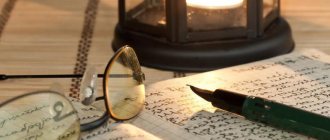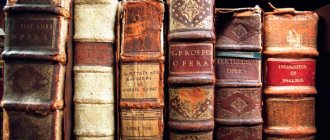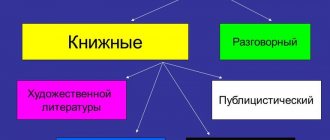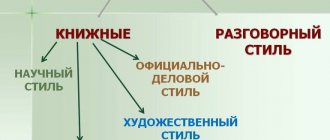When we talk about art and literary creativity, we are focused on the impressions that are created when reading. They are largely determined by the imagery of the work. In fiction and poetry, there are special techniques for enhancing expressiveness. A competent presentation, public speaking - they also need ways to construct expressive speech.
For the first time, the concept of rhetorical figures, figures of speech, appeared among the orators of ancient Greece. In particular, Aristotle and his followers were involved in their study and classification. Delving into the details, scientists have identified up to 200 varieties that enrich the language.
Means of expressive speech are divided according to language level into:
- phonetic;
- lexical;
- syntactic.
The use of phonetics is traditional for poetry. Musical sounds often predominate in a poem, giving poetic speech a special melodiousness. In the drawing of a verse, stress, rhythm and rhyme, and combinations of sounds are used for emphasis.
Types of means of expression
Anaphora is the repetition of sounds, words or phrases at the beginning of sentences, poetic lines or stanzas. “The golden stars dozed off...” - repetition of the initial sounds, Yesenin used phonetic anaphora.
And here is an example of lexical anaphora in Pushkin’s poems:
Alone you rush across the clear azure, Alone you cast a dull shadow, Alone you sadden the jubilant day.
Epiphora is a similar technique, but is much less common, in which words or phrases are repeated at the end of lines or sentences.
The use of lexical devices associated with a word, lexeme, as well as phrases and sentences, syntax, is considered as a tradition of literary creativity, although it is also widely found in poetry.
Conventionally, all means of expressiveness of the Russian language can be divided into tropes and stylistic figures.
Comparison
The use of comparison gives the author the opportunity to describe a certain phenomenon by comparing it with another phenomenon that has similar characteristics. The comparison can be expressed in the following ways:
- Unions (as if, as if, etc.)
- Instrumental case
- Using the words similar, similar
- Denial
- Comparative degree of an adjective or adverb
When analyzing a literary work, for clarity, you can fill out a table, writing out what is being compared with what.
Trails
Tropes are the use of words and phrases in a figurative sense. Paths make speech more figurative, enliven and enrich it. Some tropes and their examples in literary work are listed below.
Epithet is an artistic definition. Using it, the author gives the word additional emotional overtones and his own assessment. To understand how an epithet differs from an ordinary definition, you need to understand when reading whether the definition gives a new connotation to the word? Here's a simple test. Compare: late autumn - golden autumn, early spring - young spring, quiet breeze - gentle breeze.
Personification is the transfer of signs of living beings to inanimate objects, nature: “The gloomy rocks looked sternly...”.
Comparison is a direct comparison of one object or phenomenon with another. “The night is gloomy, like a beast...” (Tyutchev).
Metaphor is the transfer of the meaning of one word, object, phenomenon to another. Identifying similarities, implicit comparison.
“There is a red rowan fire burning in the garden...” (Yesenin). The rowan brushes remind the poet of the flame of a fire.
Metonymy is renaming. Transferring a property or meaning from one object to another according to the principle of contiguity. “The one in felt, let’s argue” (Vysotsky). In felt (material) - in a felt hat.
Synecdoche is a type of metonymy. Transferring the meaning of one word to another based on a quantitative connection: singular - plural, part - whole. “We all look at Napoleons” (Pushkin).
Irony is the use of a word or expression in an inverted, mocking sense. For example, the appeal to the Donkey in Krylov’s fable: “Are you crazy, smart one?”
Hyperbole is a figurative expression containing exorbitant exaggeration. It may relate to size, meaning, strength, and other qualities. Litota is, on the contrary, an exorbitant understatement. Hyperbole is often used by writers and journalists, and litotes is much less common. Examples. Hyperbole: “The sunset burned with one hundred and forty suns” (V.V. Mayakovsky). Litota: “a little man with a fingernail.”
Allegory is a specific image, scene, image, object that visually represents an abstract idea. The role of allegory is to suggest subtext, to force one to look for hidden meaning when reading. Widely used in fable.
Alogism is a deliberate violation of logical connections for the purpose of irony. “That landowner was stupid, he read the newspaper “Vest” and his body was soft, white and crumbly.” (Saltykov-Shchedrin). The author deliberately mixes logically heterogeneous concepts in the enumeration.
Grotesque is a special technique, a combination of hyperbole and metaphor, a fantastic surreal description. An outstanding master of Russian grotesque was N. Gogol. His story “The Nose” is based on the use of this technique. A special impression when reading this work is made by the combination of the absurd with the ordinary.
What are the figurative and expressive means of language?
All visual and expressive means are divided into:
- lexical (special: tropes, non-special: synonyms, antonyms, etc.)
- syntactic (stylistic figures of speech);
- phonetic.
Lexical figurative and expressive means of language - tropes - are words and expressions used in a figurative sense in order to create an emotional image when describing a phenomenon. Paths make it possible not only to understand, but also to feel what is described or said in words.
Syntactic figurative and expressive means - figures of speech - are a special construction of words to enhance the emotional impact of the text. Figures of speech make you feel more strongly those moments on which the author emphasizes.
In turn, tropes and figures of speech have their own classification:
Basic elements - paths
So, below we list the main elements of lexical figurative and expressive means - tropes.
An epithet is an artistic and figurative description of a phenomenon: stately aspens, mighty oak, languid light.
A metaphor is a hidden comparison: an airplane wing, a crescent moon, a sunset fire.
Metonymy is the renaming of an object or phenomenon based on close, easily understood connections between the words being replaced. For example, the forest sings (instead of “the birds in the forest sing”); the city is sleeping (instead of “the inhabitants of the city are sleeping”); the kettle is boiling (instead of “the water in the kettle is boiling”).
Synecdoche is the name of a whole through its part and vice versa. For example, save a penny (money); the viewer(s) are worried.
Hyperbole is an artistic exaggeration: an ocean of love; endless plain; not seeing each other for a hundred years.
Figures of speech
Stylistic figures are also used in literature. Their main types are shown in the table:
| Repeat | At the beginning, end, at the junction of sentences | This cry and the lines, these flocks, these birds |
| Antithesis | Opposition. Antonyms are often used. | Long hair, short mind |
| Gradation | Arrangement of synonyms in increasing or decreasing order | Smolder, burn, glow, explode |
| Oxymoron | Connecting contradictions | A living corpse, an honest thief. |
| Inversion | Word order changes | He came late (He came late). |
| Parallelism | Comparison in the form of juxtaposition | The wind stirred the dark branches. Fear stirred in him again. |
| Ellipsis | Omitting an implied word | By the hat and out the door (he grabbed it and went out). |
| Parcellation | Dividing a single sentence into separate ones | And I think again. About you. |
| Multi-Union | Connecting through repeating conjunctions | And me, and you, and all of us together |
| Asyndeton | Elimination of unions | You, me, he, she – together the whole country. |
| Rhetorical exclamation, question, appeal. | Used to enhance feelings | What a summer! Who if not us? Listen, country! |
| Default | Interruption of speech based on a guess, to reproduce strong excitement | My poor brother...execution...Tomorrow at dawn! |
| Emotional-evaluative vocabulary | Words expressing attitude, as well as direct assessment of the author | Henchman, dove, dunce, sycophant. |
Epithet
The purpose of using an epithet is to characterize, define and explain some property of an object or phenomenon. An epithet is always combined with another word and transfers its characteristics to it. Examples of epithets: golden ray, amber honey, sad star.
Epithets can be classified according to the following criteria:
- According to the method of designating a characteristic, epithets can be metaphorical and metonymic
- According to the semantic parameter of imagery, they can be divided into color, evaluative, evaluative
- According to their function, epithet is divided into figurative and lyrical.
- Their structure can be simple or complex.
- According to the degree of mastery, they can be general language and individually authored * According to the degree of connection with a certain word, epithets are divided into free and stable
- By style, epithets can be colloquial, newspaper, book, folk
Finished works on a similar topic
Course work Artistic media in literature 450 ₽ Abstract Artistic media in literature 250 ₽ Test paper Artistic media in literature 250 ₽
Receive completed work or specialist advice on your educational project Find out the cost
Test "Means of Artistic Expression"
To test your understanding of the material, take a short test.
Read the following passage:
“There the war smelled of gasoline and soot, burnt iron and gunpowder, it scraped with caterpillar tracks, screeched from machine guns and fell into the snow, and rose again under fire...”
What means of artistic expression are used in the excerpt from K. Simonov’s novel?
Swede, Russian - stabs, chops, cuts.
Drumming, clicks, grinding,
The thunder of guns, stomping, neighing, groaning,
And death and hell on all sides.
A. Pushkin
What techniques does the author use to convey the tension of the battle? Determine what role the letter “r” and sound combinations with it play in the poem?
The answer to the test is given at the end of the article.
Expressive language is, first of all, an internal image that arises when reading a book, listening to an oral presentation, or a presentation. To manipulate images, visual techniques are needed. There are enough of them in the great and mighty Russian. Use them, and the listener or reader will find their own image in your speech pattern.
Study expressive language and its laws. Determine for yourself what is missing in your performances, in your drawing. Think, write, experiment, and your language will become an obedient tool and your weapon.
Answer to the test
K. Simonov. The personification of war in the passage. Metonymy: howling soldiers, equipment, battlefield - the author ideologically connects them into a generalized image of war. The techniques of expressive language used are polyunion, syntactic repetition, parallelism. Through this combination of stylistic techniques when reading, a revived, rich image of war is created.
A. Pushkin. The poem lacks conjunctions in the first lines. In this way the tension and richness of the battle are conveyed. In the phonetic design of the scene, the sound “r” plays a special role in different combinations. When reading, a rumbling, growling background appears, ideologically conveying the noise of battle.
If you were unable to give the correct answers while answering the test, do not be upset.
Just re-read the article. Previous articlePreviousNext articleNext
Some nuances
Without fully understanding the purpose for which one or another construction can be used, it is better to avoid repetitions, on which most figurative means are based. It is also important to consider that the impression largely depends on the role of the part of speech, which can be main or auxiliary. The phonetic environment also matters.
In addition to syntactic and lexical means, there are morphological ones . This is a series of techniques based on the frequent use of verbs, adjectives, nouns or other parts of speech. Tasks can be different: convey dynamism, emphasize the sounds of nature, make the description more rich, focus the reader’s attention on anxiety, calm, serenity, and so on. The ability to understand the means of artistic expression and use them for their intended purpose will help make oral and written speech rich, vibrant and meaningful.
Chapter 2. MEANS OF EXPRESSIVE ORAL SPEECH
SPEECH MEANS OF EXPRESSIVENESS
Good diction is a necessary quality for a person working with other people. But is this enough to convey the meaning of your statements to your interlocutor, is this enough to convey the thought of the author of a work that needs to be read aloud in front of an audience, to force the imagination of the listening person to recreate the pictures of the world created by the writer, to evoke empathy for the characters?
Thought, feeling, word in reading are combined into a single whole. You can correctly pronounce all the words in the text, but at the same time not color them with emotions. You can, on the contrary, make the reading overly emotional. All this will be reflected in the thought - it will inevitably be distorted.
Listen to people's speech. It is melodic: the voice constantly changes in pitch, rising and falling slightly; according to strength - becoming quieter, then louder; in color - sometimes becoming velvety, sometimes sharp; in tempo, sometimes speeding up, sometimes slowing down. Like a musical phrase, speech has strong and weak beats, making it rhythmic; pauses. Listening to speech in an unfamiliar language, when we do not understand the meaning, but only hear the sound, helps us understand this more clearly.
The unity of the interconnected components of speech - melody, voice strength (intensity), duration, speech tempo, voice timbre, pauses and stress - is called intonation.
Speech intonation is an acoustic phenomenon (that is, it is created by certain vibrations of a sound wave in space - air - and in time). Let's consider the parameters of intonation.
Tone and range
When the sound wave produced by the passage of air through the larynx reaches our ear, we begin to hear sound.
Through an effort of will, a person tenses or weakens the vocal cords and thereby regulates the size of the hole through which air passes. This allows us to change the pitch of our voice. Nature has endowed man with a different range of voices, i.e. the number of tones available to the voice. But the range can be increased by performing special exercises and “singing” your voice.
Exercise. Try reading aloud a fragment from Donald Bisset's fairy tale “The Fog” without changing your tone of voice. What would you call such a performance?
Fog
One day, on the Queen's birthday, a fog descended on London. He wanted to watch the holiday parade. But as soon as it enveloped London, the queen said to the general:
“The parade will have to be canceled today.” Fog!
And this was repeated every time fog descended on London.
Fog was very upset, he had long dreamed of seeing the parade, but what if every time he appeared in London, the queen said:
- The parade is cancelled!
In Buckingham Palace, under the royal throne, there lived a cat named Smokey. She felt sorry for the fog and decided to help him.
One of the parameters of intonation is its range. Reading on one tone or in a very narrow sound range is called monotonous (one-tone) and causes irritation to the listener. The monotonous voice lacks expressiveness and can only convey the content of the text. Changes in tone depending on the emotional coloring of the sentence, its meaning, and the communicative situation make speech natural, melodic, and pleasant to the ear.
A rise in tone is associated in our minds with an exclamation, which can express joy, fear, delight, surprise, and command.
Lowering the tone is an indicator of firmness, determination, calmness with which a judgment, order, request is expressed.
Sometimes (in addition to muscular tension and increased exhalation), by raising or lowering the tone we indicate stressed syllables in words to which we want to attract the attention of the listener.
Tasks
1.Observe the speech of someone you know in a familiar situation. Try to catch the rise and fall of tone in it. Record several examples, noting changes in tone (pitch). Draw conclusions about in what cases we most often resort to this expressive means.
2. Listen to an actor's reading of a short passage of a work of fiction several times and note in the printed text how the pitch of the performer's voice changes. What effect does this technique create?
Smoothness
If we touch a guitar string smoothly, calmly, and then sharply (pull the string), then the instrument will produce sounds of the same tone, but of clearly different quality. By plucking the strings smoothly, we get a calmly flowing melody. Sharp blows or pinches give rise to abrupt sounds. When pronouncing words, we exhale the air gradually, smoothly - and speak in one breath, connecting the words to each other, pronouncing them as one; otherwise we exhale in bursts, on every word - and speak sharply, abruptly.
Another parameter of intonation is smoothness (shortness).








